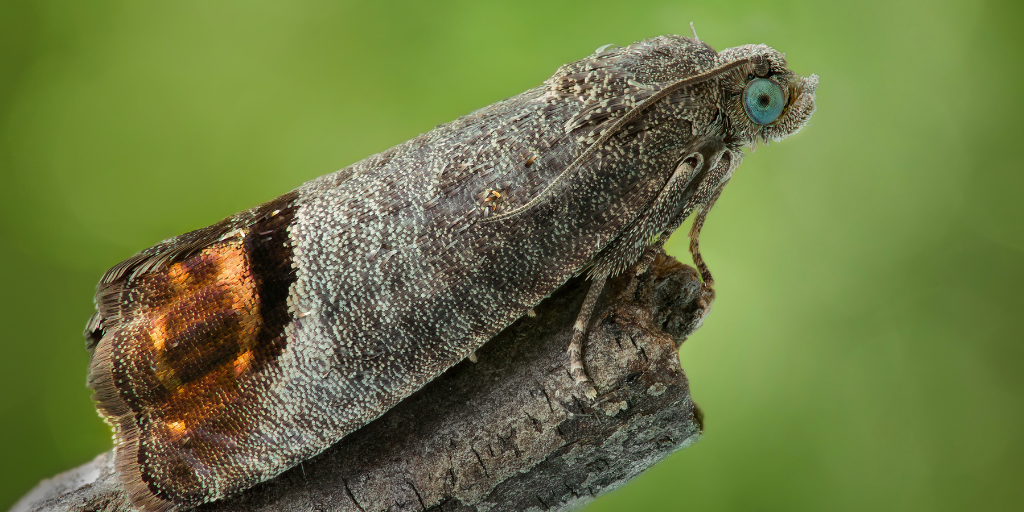Apple orchards have to dodge a wide range of pests and diseases in order to obtain a viable harvest. The 2021 North American apple season has two major concerns on growers’ radars: fire blight, and codling moths. Apples are susceptible to each throughout the season, but particularly during the bloom stage. Research continues on how to best prevent, scout, and treat disease and pests – and best practice strategies are helping growers execute on successful seasons against the odds.
Fire blight
If it’s not the unprecedentedly high temperatures and wildfires impacting apple yields, it’s a now-common blight that causes damage that appears like singed leaves and branches. Due to its broad resilience and ability to infiltrate a main branch or trunk, it’s possible for whole orchards to be swiftly wiped out. This can undo years of leadup for orchard-focused operations that must plan for tree maturation and varied yields from year to year, depending on the variety.
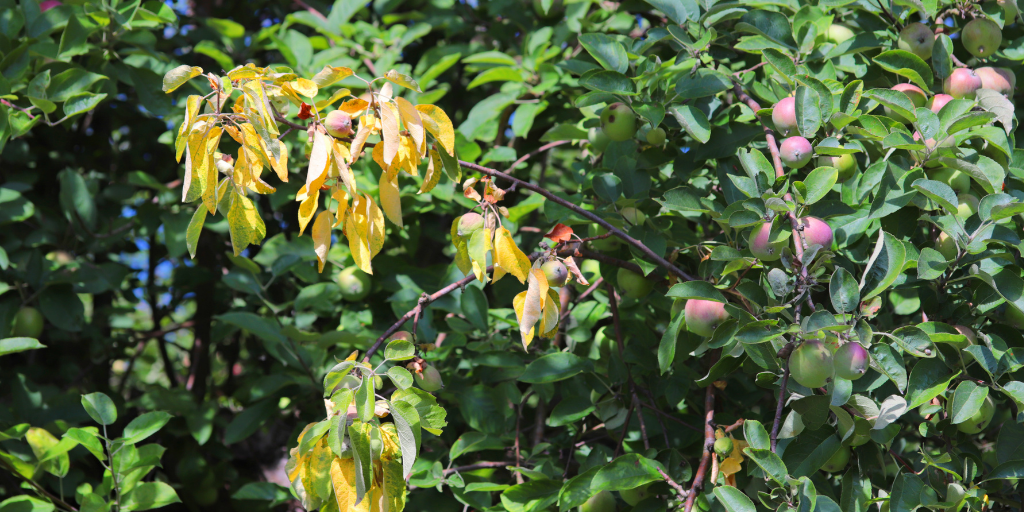
Fire blight is caused by the bacterium Erwinia amylovora (Burrill), which targets hosts within the Rosaeceae family. It’s capable of attacking various parts of the apple tree. Symptoms are referred to by the part of the tree that has been attacked – from bloom blight to shoot blight, to limb and trunk blight. High density plantings, newer varieties, and young trees are at greatest risk of contraction. Identify fire blight by a tree’s infected twigs and branches that darken and curl downward at the tip; infected leaves can also wilt and brown while remaining attached to the tree.
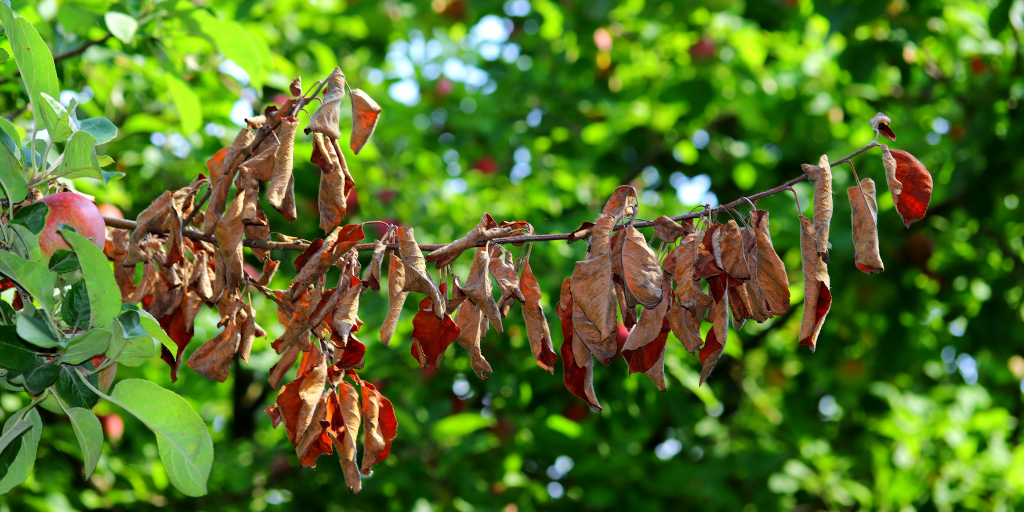
The Erwinia amylovora bacteria survives over winters in wounded or delicate areas of a tree, like its cankers. The disease proliferates once thaw and warmth arrive via carrying insects and rainfall, and spreads as the weather continues to heat up.
Compounded impact of fire blight on cider apple growers
Craft cider has grown into a billion-dollar industry in the US – but maintaining production in line with demand casts a shadow over this boom. Warmer, wetter springs have led to the proliferation of fire blight, and cider apple growers are particularly vulnerable to the impacts of this climate shift. Growers specializing in cider apples typically grow European varieties, of which tend to be biennial in their harvest yield.
When these trees have a high-bloom year, there’s a higher risk of bacterial spread throughout the orchard with less space between the flowers. This can mean a wipe-out of not just individual trees if not caught swiftly, but a whole orchard, undoing the ten-year investment poured into cultivation. Royal Farms in Ellsworth, Michigan has been an apple orchard for 25 years, growing sweet and bitter varieties best suited for hard cider production. They’ve been combating fire blight bacteria since the 2020 season, when they had to remove $10,000 worth of trees - by hand - that had only been in the ground for a few weeks.
The hard cider industry is celebrated for its tenfold growth over the last decade, according to Executive Director of American Cider Association, Michelle McGrath, but continued scaling of this market is uncertain as climate change and its cascading effects make apple production increasingly challenging.
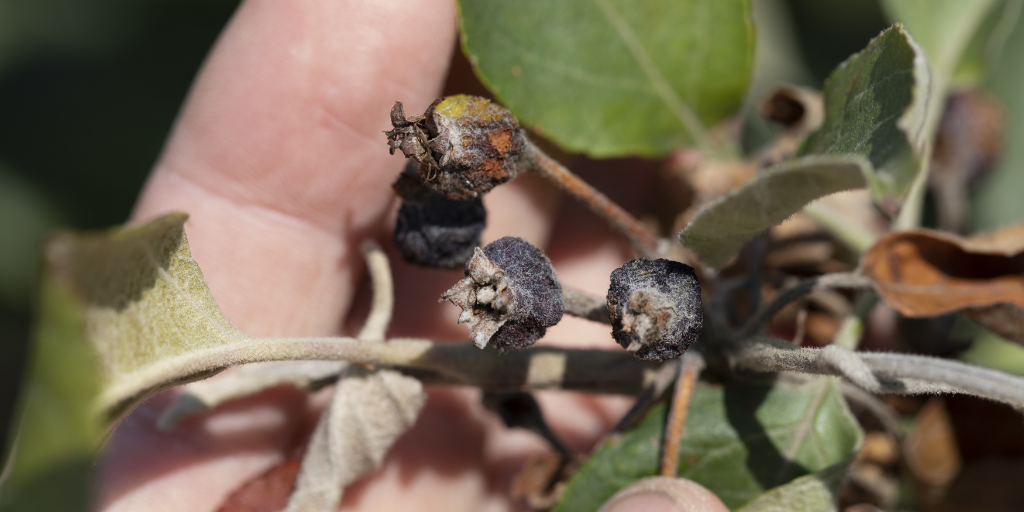
Preventing, managing, and treating fire blight
Growers must approach suppressing fire blight from all angles in order to keep bacteria in check from one season to the next. Prevention looks like careful cleaning of orchard management tools, and selecting resistant scion or rootstock for cultivation. But it also includes practices that straddle prevention and active management.
Decision support models offer predictions that assist growers, consultants and scouts to forecast vulnerable conditions for apple blossoms to become infected, and time control applications for the most conducive moment. Created for orchards that have been exposed to the Erwinia amylovora bacterium, the Maryblyt and Cougarblight models both assess environmental inputs like temperature, rainfall, dew, against the growth stage of trees and point of the season. The Maryblyt model was developed in the late aughts, and is strictly a computer-based application that focuses on several key factors to determine when a blossom infection will occur. The analogue Cougar blight model, developed by offers a score-based framing that does not require the use of a computer to use (though a digitized version of the Cougar is available).
When fire blight is present in the orchard, quick approaches to suppression are critical. These include pruning infected limbs and branches with carefully cleaned tools, biological control agents, and growth regulators. Limiting the amount of applications per product, per season, slows down resistance issues.
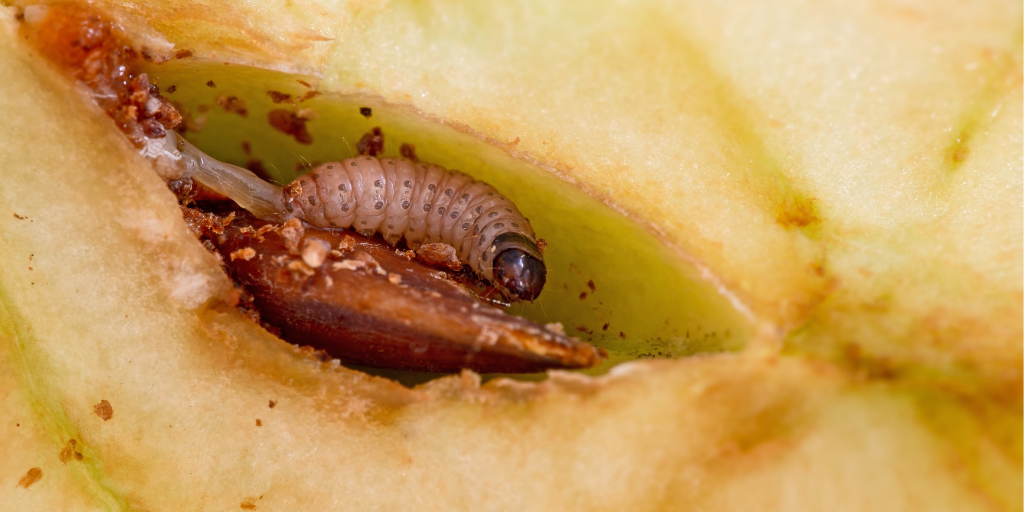
Codling moth
Codling moths start attacking fruit surfaces as early as their larvae stage. Once mature, the moths are capable of tunneling into the interior tissue. This tunneling can cause fruit to abort prior to harvest, while fruit with surface feeding may remain on the tree until harvest. Injury causes internal breakdown of the fruit, however, often leading to premature drop.
If codling moths are left to their own devices in the orchard, their population can increase four times over from one generation to the next, particularly because they can reproduce twice in a season in accommodating regions. Uncontrolled codling moth populations can damage 50% to 90% of a crop! This capacity to proliferate means that there’s a critical need to control the population size of the first generation of moths in a season, to mitigate the damage incurred. Focusing pest control approaches across the life cycle of the codling moth leads to the strongest results, with tool recommendations including mating disruption, ovicides, and larvicides.
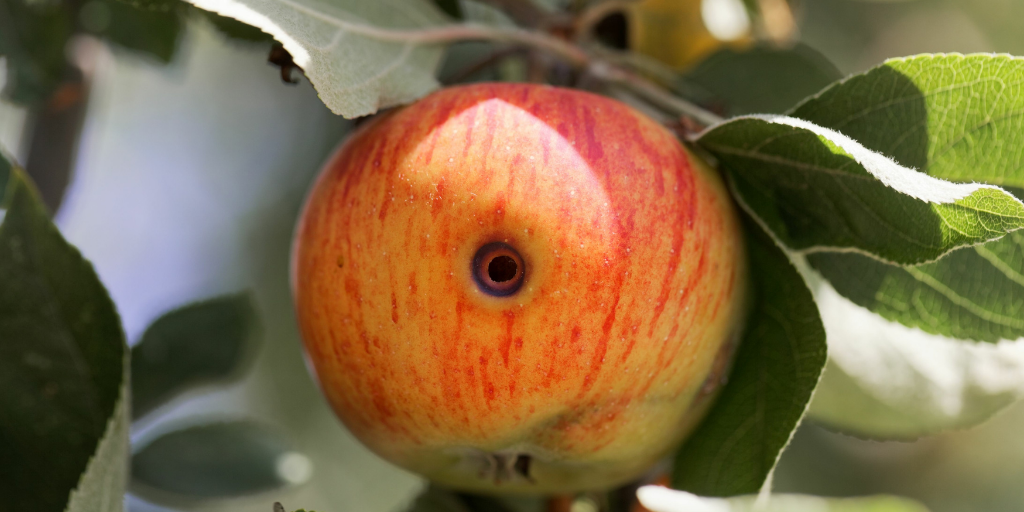
Mating disruption solutions are placed in the orchard early in the season. Installed solution dispensers last from bloom to harvest, and aim to prevent mating and egg laying, like an aggressive birth control. Applying oil-based ovicides provides effective results with a short residue period of only one day, that also avoid suppressing codling moths’ naturally occurring parasitoids.
Codling moths needed a task force – and so far, it has found good news
Established at the end of 2020 to monitor and evaluate the shifting challenges in the apple industry, the Codling Moth Task Force out of Washington State Extension has been gathering up to date information on codling moth management practices. The task force intends to promote training on basic biology, monitoring and management techniques; identify challenges to control; and encourage new research and extension initiatives that will move the industry forward. Its first project has been to conduct a major survey of growers in the Pacific Northwest region of the US on their orchard management practices.
The initial results of the survey indicate that more growers are transitioning acres from conventional management over to organic production. Integrated Pest Management (IPM) practices have evolved extensively over the last two decades, with current pheromone-based programs enabling successful pest control without the need for broad-spectrum organophosphates. These applications are on the fickle side, however, and require adequate effort and resources in order to be effective. The payoff is certainly worth the work. IPM emphasizes maximizing economic prosperity for growers with minimal environmental impact - frameworks like these have been advocated for as early as the 1970s by ecologists and entomologists. Commitment to avoiding environmental harm has mainstreamed and become paramount to more growers around the world, and as optimal production conditions become more fragile.
Growers reported a low tolerance for the amount of damage deemed acceptable from codling moths or otherwise. To the surprise of the task force, the majority surveyed growers have also reported that codling moth damage has remained unchanged or even decreased, even with the increase of organic production. Some encouraging news!
Regular meetings of the 29 member task force will resume this fall.
Insult to injury is when the threats intersect
Weakened fruit and damaged shoots from codling moth activity can spell trouble for trees, for the fire blight bacteria has greater opportunity to infect within its vulnerable spots. Insects can also carry fire blight throughout an orchard, making it paramount that action is taken to manage orchard threats from disease and pests simultaneously. It is also important to note that threats to harvest beyond fire blight and codling moth – like fungus and environmental stresses – can obscure a clear path to diagnosing what’s wrong with a tree. Proper diagnosis of the underlying issues in an orchard allows for a tailored management strategy, and hope for maintaining a successful yield.
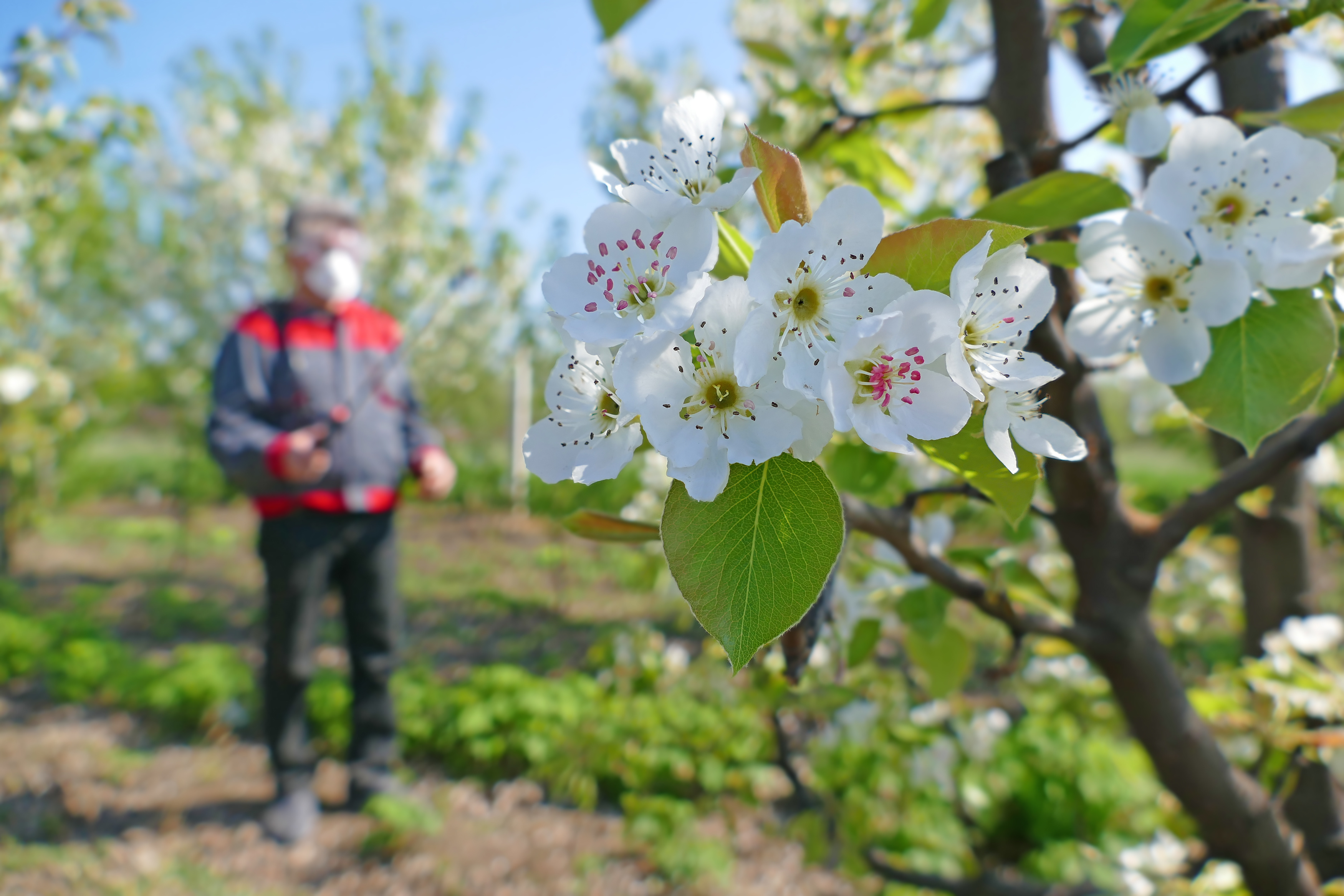
Keeping track of production contributes to a stronger harvest
The best defence against a chaotic season is to track all possible variables, so you can learn from one season to the next and be accountable to regulatory bodies in your area. Croptracker's Spray module is just one of production tracking tools available in its premiere ERP system. Learn more about Spray and its planning, recordkeeping, and safety practice features here.
Croptracker develops agtech solutions for industry leaders. Designed with fresh market producers and distributors in mind, every tool we create is based on direct industry feedback.
Optimize your harvest season with Croptracker’s customizable solutions: learn more about our Farm Management Software. or book a demonstration to schedule a meeting with our product experts.
